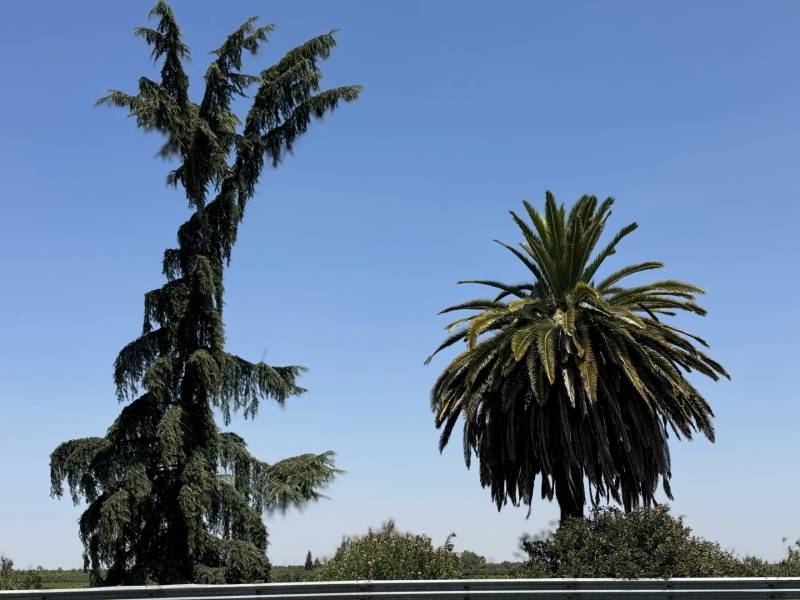Here are the morning’s top stories on Monday, September 2, 2024…
- Highway 99 has its share of iconic landmarks: there’s Buck Owens Crystal Palace, the Delano Box of Mandarins, the McFarland Runners, and the Merced Mammoths. But in Madera County, you might not recognize the Palm and the Pine. The two trees are said to represent the middle of California and have been there for nearly 100 years. But they might not have much time left.
- California lawmakers passed a controversial warehouse bill on the final day of session, despite opposition from environmental justice groups, industry and cities and counties statewide.
The Lore Of ‘The Palm And Pine.’ Why Two Distinct Trees In Central California Are Coming Down
Highway 99 through the Central Valley is no stranger to iconic roadside landmarks. That includes a pair of trees between Fresno and Madera sometimes referred to as “the palm and the pine.” They’ve stood firm for nearly a century in the highway median just south of Madera.
Though their exact origin is unknown, many believe the trees represent the midpoint of the state – the pine facing the north, and the palm to the south. Thousands of cars, semi trucks and freight trains pass by each day. While most drivers likely don’t notice the site, some seek it out and even say it conjures a feeling of home.
But the trees won’t be here for much longer. A planned freeway expansion requires them to be torn down. And although transportation officials are planning another monument in its place, many locals are disappointed to lose a familiar landmark.
State Lawmakers Pass Controversial Warehouse Bill
On the final day of the legislative session, state lawmakers passed a controversial bill dealing with warehouse building standards.
